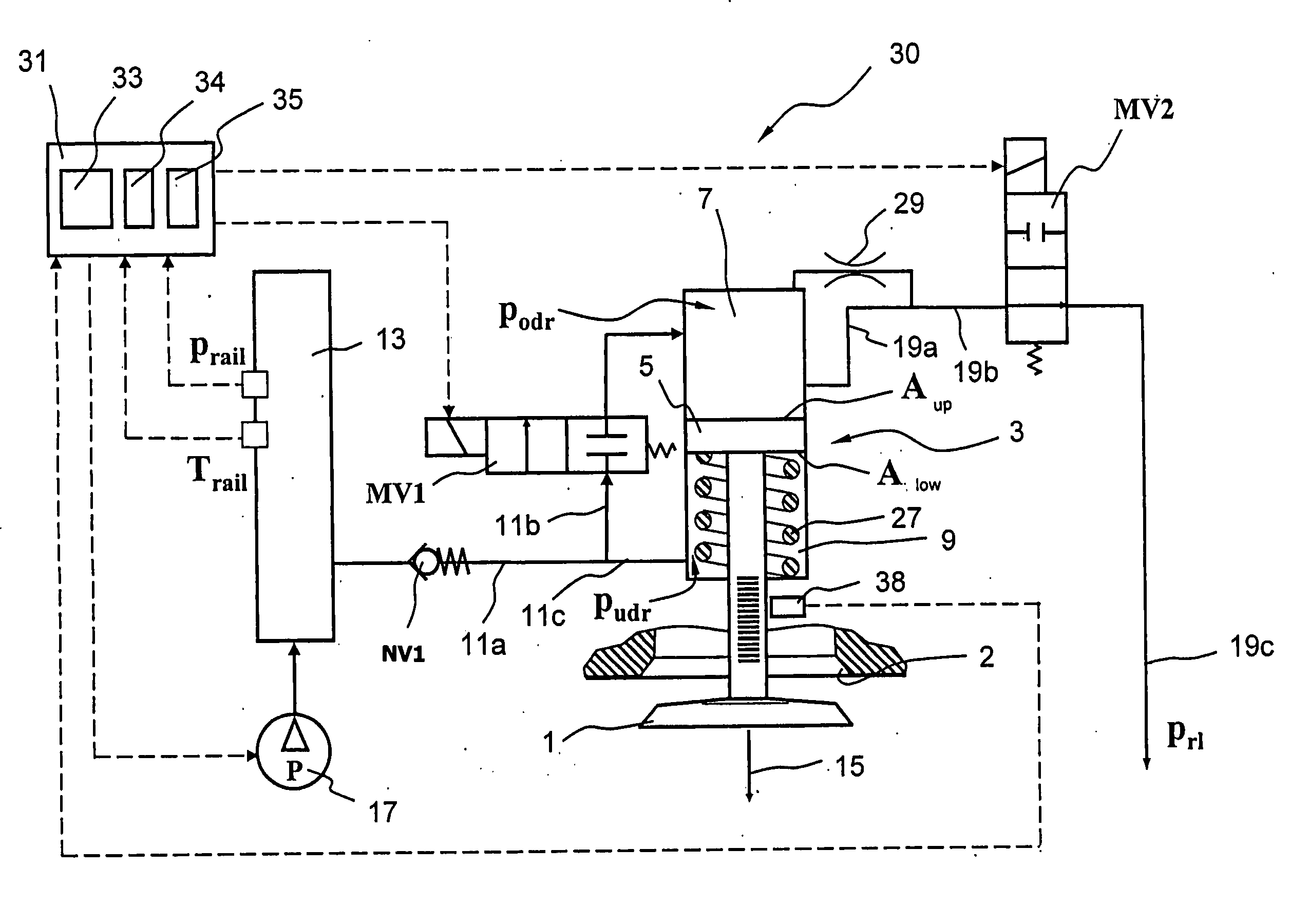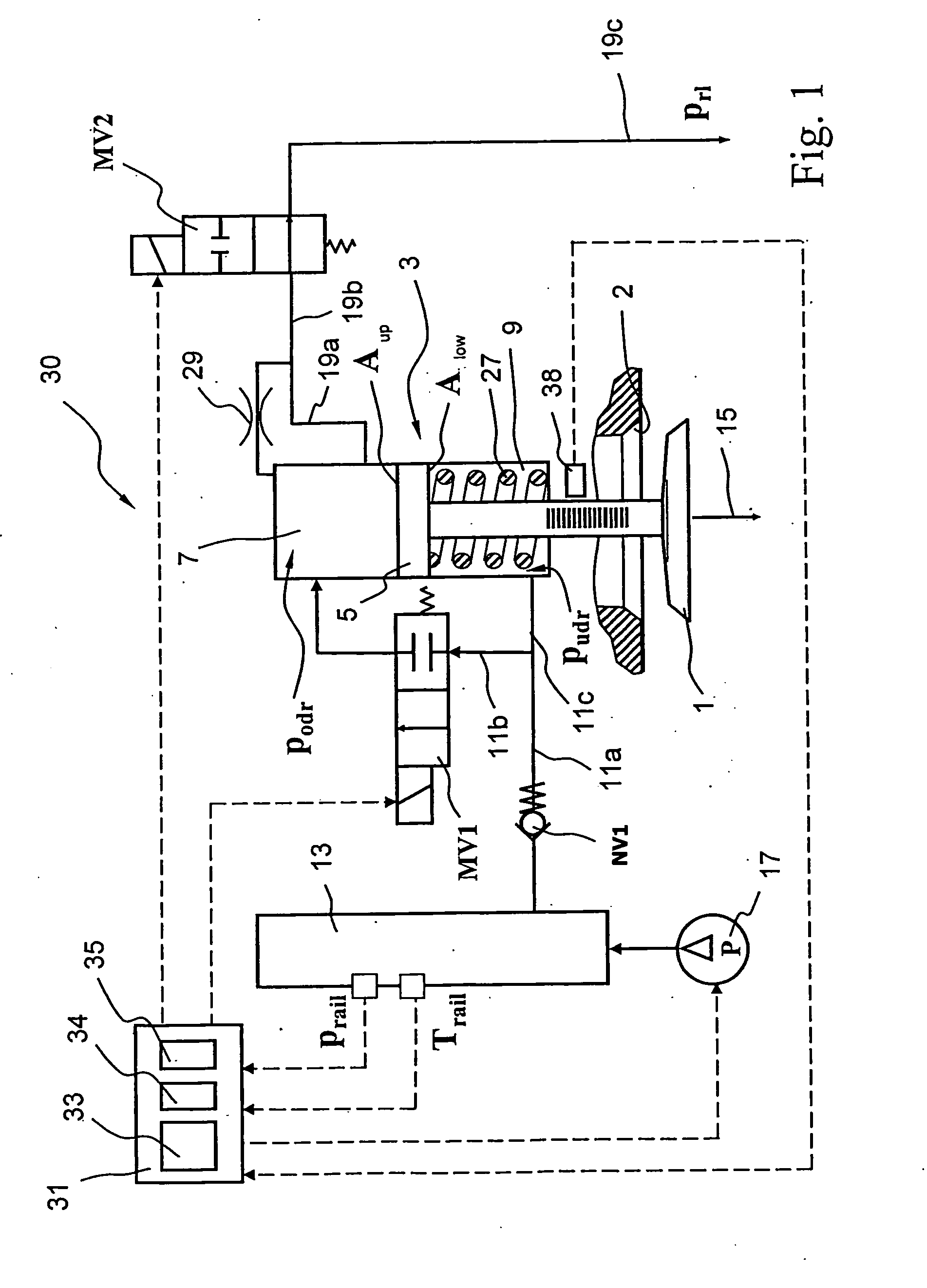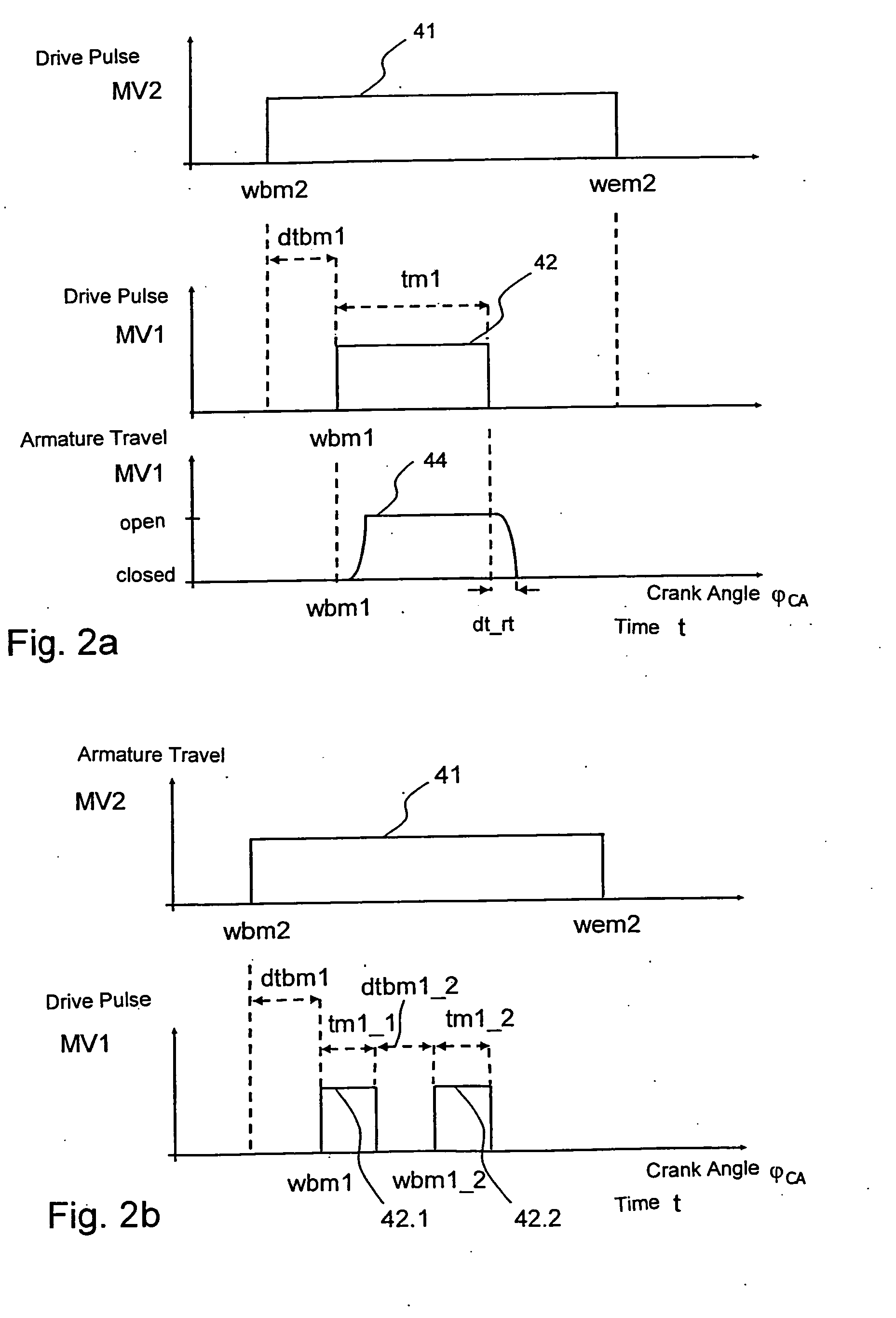Method and device for controlling a hydraulic actuator
a technology of hydraulic actuators and actuators, applied in electrical control, non-mechanical valves, machines/engines, etc., can solve the problems of high modeling and/or application expenditure in order to achieve the required actuator precision, rapid change, and difficult modeling, so as to avoid transient errors of valve lift, high actuator precision, and large possible errors
- Summary
- Abstract
- Description
- Claims
- Application Information
AI Technical Summary
Benefits of technology
Problems solved by technology
Method used
Image
Examples
Embodiment Construction
[0066]FIG. 1 shows schematically a conventional exemplary embodiment of an electrohydraulic valve control (EHVC), based on which the control method according to the present invention is intended to be carried out. However, the present invention is not restricted to this exemplary use.
[0067]Actuator 30 shown in FIG. 1 is used by way of example for actuating a gas-exchange valve (GEV) 1 of an internal combustion engine. Gas-exchange valve 1 may be implemented as an intake valve or exhaust valve. In the closed state, it rests on a valve seat 2.
[0068]Instead of a single gas-exchange valve 1, in elaboration of the arrangement sketched in FIG. 1, a pair of interconnected gas-exchange valves (double-acting valve) may also be actuated together, in particular may be synchronously opened and closed, by a single hydraulic actuator. Hereinafter, when a gas-exchange valve 1 is mentioned, a double-acting valve along the lines of this expanded arrangement can always be meant, as well.
[0069]Gas-exc...
PUM
 Login to View More
Login to View More Abstract
Description
Claims
Application Information
 Login to View More
Login to View More - R&D
- Intellectual Property
- Life Sciences
- Materials
- Tech Scout
- Unparalleled Data Quality
- Higher Quality Content
- 60% Fewer Hallucinations
Browse by: Latest US Patents, China's latest patents, Technical Efficacy Thesaurus, Application Domain, Technology Topic, Popular Technical Reports.
© 2025 PatSnap. All rights reserved.Legal|Privacy policy|Modern Slavery Act Transparency Statement|Sitemap|About US| Contact US: help@patsnap.com



